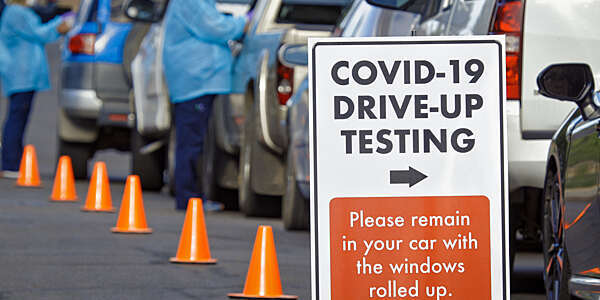Putting patients first
More and more, health systems are addressing the concept of patient-centered care and ISO is at the forefront of this development.
Screening for viruses and communicable diseases has experienced great advances in recent years, enabling a high number of people to be tested faster, more safely and prevent the spread of infection. ISO is at the forefront of developing standards that will help healthcare organizations and governments respond more rapidly and capably to pandemics and emergencies.
In response to the COVID-19 pandemic, many different models of infectious disease screening, including contactless drive-through and walk-through stations, have been rapidly deployed around the world. The World Health Organization (WHO) has cautioned that healthcare workers, despite precautions being taken, continue to be exposed to excessively high levels of risk relative to the rest of the population.
With the safety of both the healthcare provider and the patient in mind, ISO technical committee ISO/TC 304, Healthcare organization management, established a working group (WG 4) to focus on how best to cut the chain of transmission in situations of pandemic. WG 4, Pandemic preparation response, aims to develop standards that will help healthcare organizations run safe and fast testing facilities with the ability to rapidly quarantine and treat patients without increasing infection rates.
The COVID-19 pandemic has revealed the importance of developing and maintaining healthcare systems that are not only able to handle such crises, but that can spring into immediate action to reduce the spread of infectious diseases quickly and effectively at the first signs of an outbreak. Three standards currently being worked on are ISO 5258 (drive-through screening stations for infectious disease control), ISO 5472 (walk-through screening stations for infectious disease control) and ISO 5741 (pandemic response in residential treatment centres). These standards will provide an effective infection control strategy by giving health workers the ability to quickly identify, isolate and treat patients through rapid examination.

Outdoor minimal-contact approaches have been shown to significantly cut the spread of infections.
For drive- and walk-through testing facilities, the working group is assessing best practice and recent case studies on the processes involved. Typically, patients undergo a screening process that includes a medical interview, temperature check and specimen collection by literally walking or driving their car through a test station.

© Ed Jones
An elderly woman enters a coronavirus testing booth outside the Yangji Hospital in Seoul, South Korea.
These outdoor minimal-contact approaches to testing have been shown to significantly cut the spread of infections and reduce pressure on hospitals. By keeping patients outside in a car park or in small plastic testing booths, potentially infected people are not in hospital waiting rooms, which reduces the time and resources needed for disinfection measures, if tests were conducted in hospitals.
Dr Sun-Ju Ahn, a professor in the Department of Biophysics at Sungkyunkwan University, is a key member of the ISO working group. At the forefront of the standards work, she is keen to share guidelines and findings from the “KWalk-Thru” initiatives undertaken in her country, South Korea. With these foundations, WG 4 will build consensus towards the optimal performance of these critical facilities, taking into account the lessons learned from across the working group’s membership.

© MediaNews Group/Reading Eagle via Getty Images
“These are systems that can be used globally in order to minimize contact among patients and medical personnel and also significantly reduce the use of personal protective equipment (PPE),” Dr Ahn explains. “The drive-through screening stations have been very effective during the recent pandemic, enabling large-scale screening within a limited time. This approach is also being used in other countries, and the ISO standards will provide a clear structure for how all countries and health organizations can plan and prepare for such emergencies.”
A vital requirement being considered by the working group is the importance of keeping patients separated from each other, as well as from the medical staff providing the tests and treatment. The standards will cover negative pressurized medical containers (NPMCs), in which the path between healthcare worker and patient is completely separated. NPMCs prevent cross-infection by directing airflow away from the worker towards the patient. Diagnoses are conducted through intercoms, without direct physical contact. Filtered air prevents the outflow of pathogens and allows specimen collection rooms to operate as separate environments.
What’s more, a strict reservation system can be used to prevent cross-infection during medical emergencies, Dr Ahn points out. People can reduce the time of exposure to contamination at the walk- and drive-through testing sites by filling out their details online before appearing in person for the test. “With the higher volume of patients during a pandemic, the first phases of testing can be undertaken remotely, which makes the walk- and drive-through process faster, safer and easier when done on a massive scale.”

A further challenge faced by healthcare organizations during pandemic emergencies is how to quickly provide additional hospital beds. The working group will also focus its efforts on a framework for residential treatment centres (RTCs). RTCs have been used in South Korea as temporary triage hospitals that treat patients with mild symptoms who are not able to return home. Hospitals and other facilities can then be kept free for more serious medical issues.
The goal of this standard will be to ensure that a country’s healthcare capacity can be more responsive and flexible during a pandemic, using time and resources more effectively and leading to better patient management. Dr Ahn notes that if healthcare organizations and governments work collaboratively with private industry, RTC facilities and building conversions can go a long way to improving emergency preparedness and response.
The COVID-19 pandemic has brought to light the sub-optimal resilience of health systems around the world, exposing the disparity between countries’ local and global response to tackling the crisis. It is important to remember that each country has a different healthcare system and a different political and economic infrastructure. This means there are a host of global health experts who have a great deal to contribute towards the innovation and improvement of emergency healthcare.
The crisis also makes us reflect on the need for solidarity as a global community. This is a time when all countries must come together under one umbrella to revise and improve their health systems’ resilience and preparedness, while strengthening their capacity to adapt, absorb and transform. The ISO standards under development will deliver important guidance for shared international cooperation between developed and developing countries, offering new tailored solutions for a coordinate global response.
For more information, please visit the ISO/TC 304 website.

on
More and more, health systems are addressing the concept of patient-centered care and ISO is at the forefront of this development.

on
